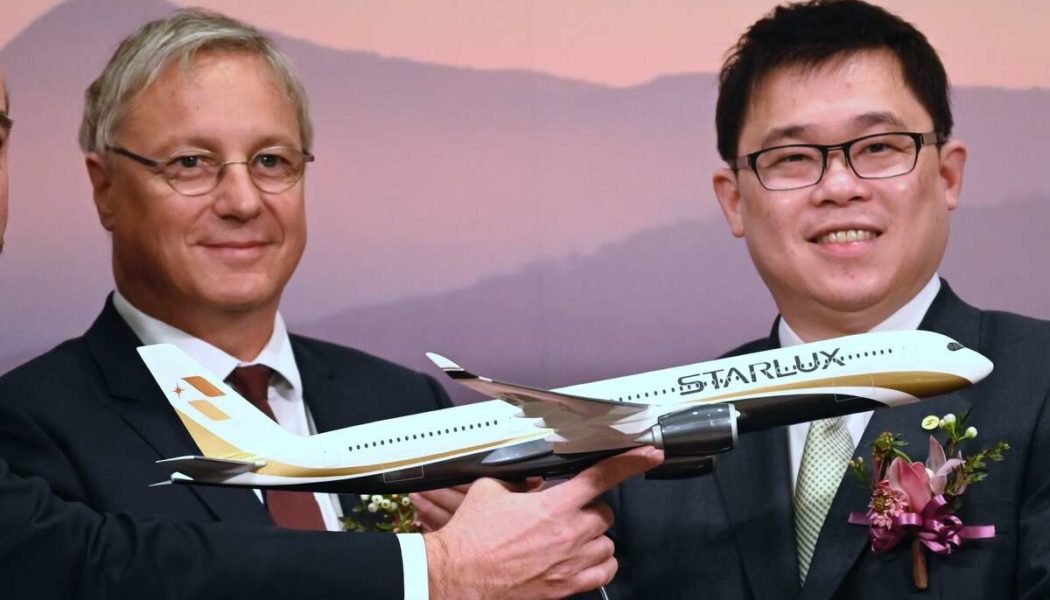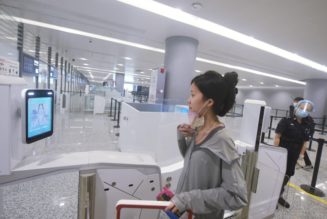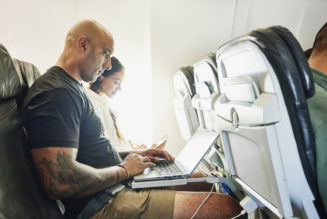In this week’s air travel developments, a new survey finds that most Americans would fly more if they weren’t so anxious about delays, cancellations and airport congestion; Taiwan’s Starlux hopes to add San Francisco flights this year and forms a partnership with a U.S. carrier; American will join a crowded field in offering Los Angeles-New Zealand service next winter as it pulls back from plans to develop Seattle as its West Coast international gateway; U.S. carriers continue to hold off a restoration of service to China; there’s more international route news from JetBlue, Lufthansa, Alaska/Icelandair, American and Avianca El Salvador; United plans to reduce some service to Hawaii from the West Coast in December; Santa Rosa gets new low-cost carrier service to Oregon, and there’s domestic route news from JSX, Avelo and Spirit Airlines; Southwest’s bottom line takes a big hit from its December operational meltdown; San Francisco International’s AirTrain reopens a Terminal 1 stop; San Jose bigwigs turn out for a restaurant opening at SJC; and Orlando International opens a rail terminal for intrastate train service.
Although the outlook for leisure travel this year remains robust, a new survey commissioned by the U.S. Travel Association finds that Americans would probably take even more trips if they weren’t so concerned about the possibility of flight disruptions. While 53% of survey respondents said they plan to travel in the next six months, “less than one-third of recent air travelers (32%) are very satisfied with the air travel experience,” USTA said. And while 42% traveled by air for leisure in the past 12 months, “35% of those reported having a flight delayed or canceled,” USTA said. More than half of the respondents (52%) to this second-quarter survey “say they would travel more for leisure in the next six months if the travel experience was not as much of a hassle,” USTA said — almost twice the number who said so in a first-quarter poll. Asked what makes air travel such a hassle, 43% cited “crowding and congestion” and 40% blamed flight delays and cancellations.
Rather than pointing the finger at the airlines, whose pilot shortages, insufficient staffing, and technological inefficiencies led to many of last year’s problems, USTA criticized the federal government for not doing enough to untangle the nation’s air travel system. The organization said that the current “air travel woes” are the “result of years of federal underinvestment,” citing as one example the Federal Aviation Administration’s recent request that airlines reduce their schedules at New York and Washington, D.C., airports to help the agency cope with a shortage of air traffic controllers in that region. USTA said the government could start to solve the problems by adding targeted funding to this year’s FAA reauthorization bill, including at least $50 million aimed at increasing the numbers of qualified pilots and mechanics, $4.5 billion to improve air traffic control systems (including the hiring of 5,400 air traffic controllers over the next three years), and $4 billion in airport improvement grants annually.
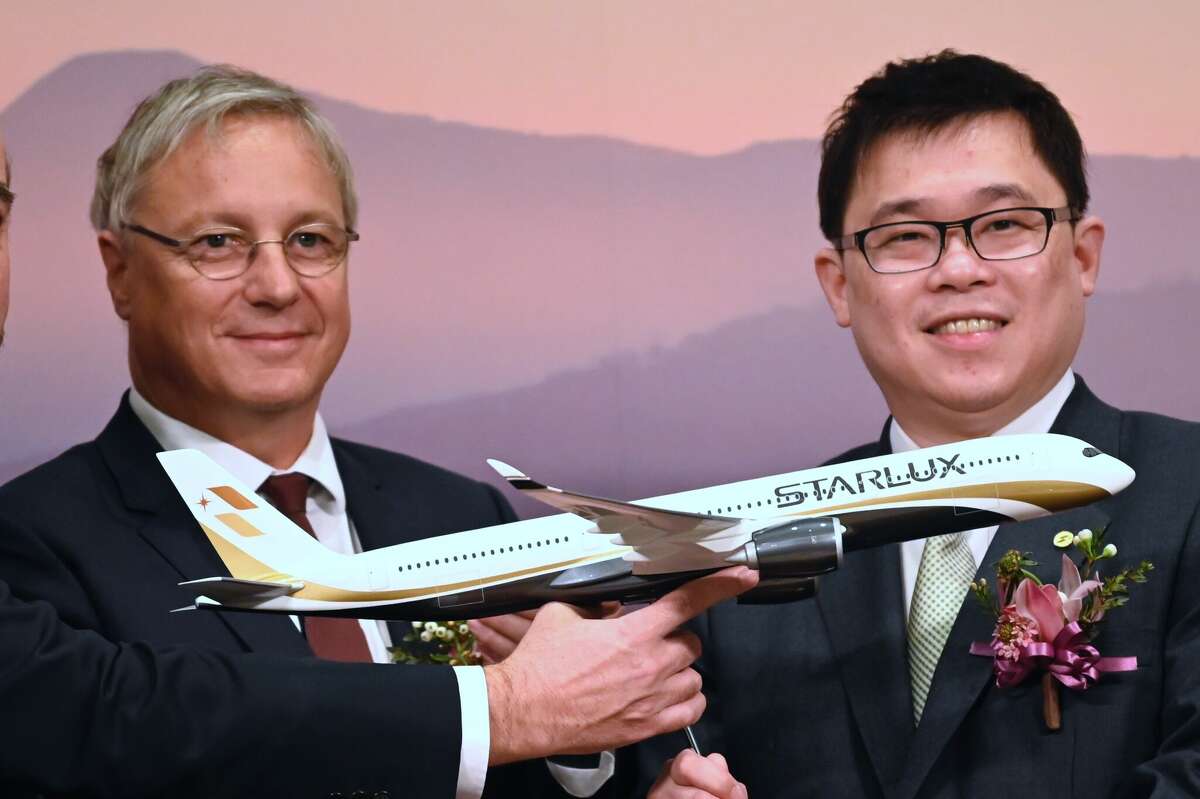
Starlux chairman Chang Kuo-wei, right, receives an Airbus 350-1000 model from Christian Scherer, chief commercial officer of Airbus, during a signing ceremony in Taipei on March 19, 2019.
Sam Yeh/AFP via Getty Images
The 3-year-old Taiwanese carrier Starlux this week introduced its first U.S. route with four-class A350-900 service between Los Angeles and Taipei, and now Routesonline reports that the company has targeted San Francisco as its next U.S. gateway, with plans to begin SFO flights late this year. The SFO-Taipei market is already served by EVA Air, China Airlines and United. Meanwhile, Alaska Airlines has just announced a new partnership with Starlux. The two companies promise seamless connections at LAX, and Alaska Airlines Mileage Plan members can now earn miles on Starlux flights, with the availability of award travel to Taipei to follow this summer, Alaska said.
If you want to fly from Los Angeles to Auckland, New Zealand, right now, your only option for nonstop service is Air New Zealand, but that is expected to change in a big way this fall and winter, when three big U.S. airlines enter the market. American Airlines this week disclosed plans to start daily LAX-Auckland 787-9 nonstops on Dec. 21, dropping to three a week Feb. 15. American, which already flies from Dallas/Fort Worth to Auckland, had suspended the LAX route during the pandemic. United recently said it will kick off LAX-Auckland flights four days a week starting Oct. 28, and earlier this year, Delta announced plans to introduce daily A350-900 nonstops on the route on the same date.
BEST OF SFGATE
American’s announcement is significant because a few years ago, the carrier decided to shift its West Coast international growth from LAX to Seattle as part of its growing partnership with Alaska Airlines, which has since become a full member of AA’s Oneworld global alliance. After the pandemic set in, however, American’s plans to begin Seattle-Shanghai and Seattle-Bangalore service were repeatedly postponed and appear to be on permanent hold. American did begin Seattle-London nonstops, but according to The Points Guy, that route is due to end Oct. 27 for the winter season, if not longer, leaving the airline with no international flights out of SEA. The Points Guy also reported that six of American’s routes to Europe that were due to end in late October have now been extended into the winter, including Charlotte-Madrid, Dallas/Fort Worth-Dublin, DFW-Rome, and Philadelphia to Barcelona, Rome and Lisbon.
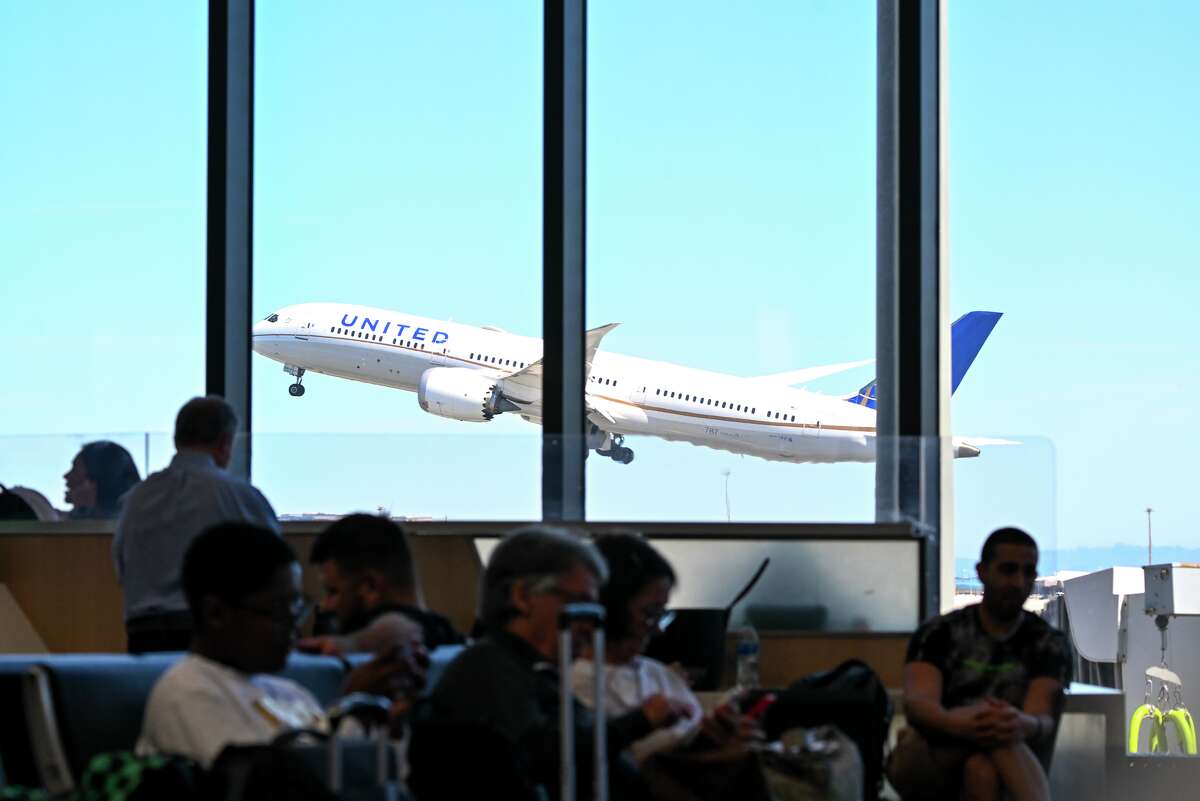
A United Airlines plane takes off from SFO on April 22, 2023.
Tayfun Coskun/Anadolu Agency via Getty Images
Even though China has reopened to international travelers, air service to the country is still just a small fraction of what it was before COVID-19, with few signs of improvement. Aeroroutes.com reported this week that United’s plans to boost frequencies on its San Francisco-Shanghai route from four flights a week to seven, which was supposed to happen last month, now won’t begin until July 1 at the earliest, and American this week cut its Dallas/Fort Worth-Shanghai schedule from four weekly flights to two. In one hopeful sign, however, the Chinese government said that effective April 29, international visitors will no longer be required to show a negative result on a PCR test before boarding their flights to China, although the country will still require a simpler antigen test to be taken less than 48 hours before departure.
In other international route news, JetBlue has now set a starting date for its recently announced Amsterdam service. Daily flights are scheduled to kick off from New York JFK on Aug. 29 and from Boston on Sept. 20. AMS will be JetBlue’s third European destination after London and Paris. It will fly the route with long-range Airbus A321s featuring 24 lie-flat Mint suites and 114 coach seats, and Amsterdam fares will begin at $479 round trip (or $1,899 for Mint service). Lufthansa, citing a “surging” demand for transatlantic air travel, said it will expand capacity between Los Angeles and Munich starting Oct. 5 by switching aircraft on that route from an A350 to a larger Airbus A380 super-jumbo. Alaska Airlines plans to expand code-sharing with Icelandair effective May 5, putting its AS code on the latter’s flights to Reykjavik from Portland and Seattle. American Airlines is set to revive daily seasonal service to Dublin from its Charlotte hub on May 4. Avianca El Salvador plans to introduce a new route between San Salvador and Las Vegas on July 20, with three Airbus A320neo flights a week.
In an update of its Hawaii schedules, United Airlines is planning to reduce service from the West Coast to Maui next winter, according to Simple Flying. Citing airline data tracker Cirium, the site said since last week, United has reduced its previous San Francisco-Maui schedule for December by 44 flights, from 124 to 80 during that month, and also trimmed 18 December departures on its Los Angeles-Maui route. United also plans to cut a handful of flights from SFO and LAX to Kona on the Big Island, and from LAX to Kauai — although the number of seats on offer from SFO to Kona is slated to increase due to the use of larger aircraft. The airline also plans to trim LAX-Honolulu service in December by 13 flights, but add 46 departures to its SFO-Honolulu schedule and 20 to Denver-Honolulu.
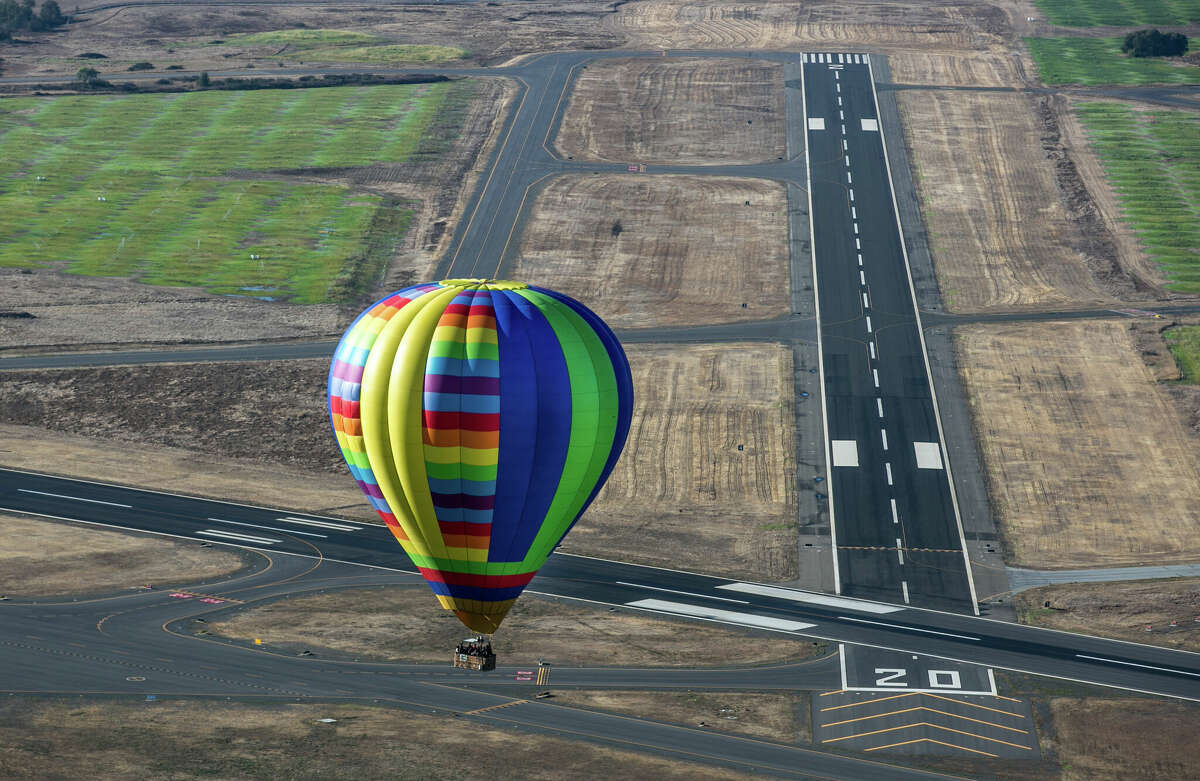
A hot air balloon floats over a jet runway near Charles M. Schulz Airport in this aerial photo taken Nov. 5, 2017, in Windsor, Calif.
George Rose/Getty Images
In other domestic route news, Sonoma County’s Charles M. Schulz Airport in Santa Rosa is getting new service this summer to central Oregon. The low-cost carrier Avelo said it will launch twice-weekly flights from Santa Rosa to Redmond Municipal Airport on June 23 — a route that currently has no commercial service. On May 3, Avelo is scheduled to kick off a new route from Hollywood Burbank Airport to Colorado Springs with three weekly flights. The regional carrier JSX plans to introduce new business class-style regional jet service on May 11 between Las Vegas and Austin. Spirit Airlines, which plans to merge with JetBlue if they can get past a Justice Department antitrust suit seeking to block the deal, this week unveiled plans for an expansion at Boston, one of JetBlue’s East Coast strongholds. Those plans include a new Spirit route between Boston and Los Angeles, offering daily service beginning July 5. Spirit also plans to begin daily year-round service from Boston to Charlotte and Dallas/Fort Worth on June 7, and from Boston to Phoenix starting Aug. 9. Spirit this week took delivery of its 200th new plane from Airbus, one of 26 it is adding to its fleet this year.
Southwest Airlines’ service meltdown the week after Christmas not only tarnished the carrier’s image — it also hammered the company’s bottom line. Southwest’s first quarter financial results, issued this week, showed a pre-tax net loss of $380 million, which it said was “related to the December 2022 operational disruption.” According to Southwest, the red ink was mostly caused by a “negative revenue impact of approximately $325 million, as a result of cancellations of holiday return travel and a deceleration in bookings for January and February 2023 travel.” Beyond that, the company said it was profitable during the month of March and it expects to see “solid profits and year-over-year growth” for the rest of 2023.
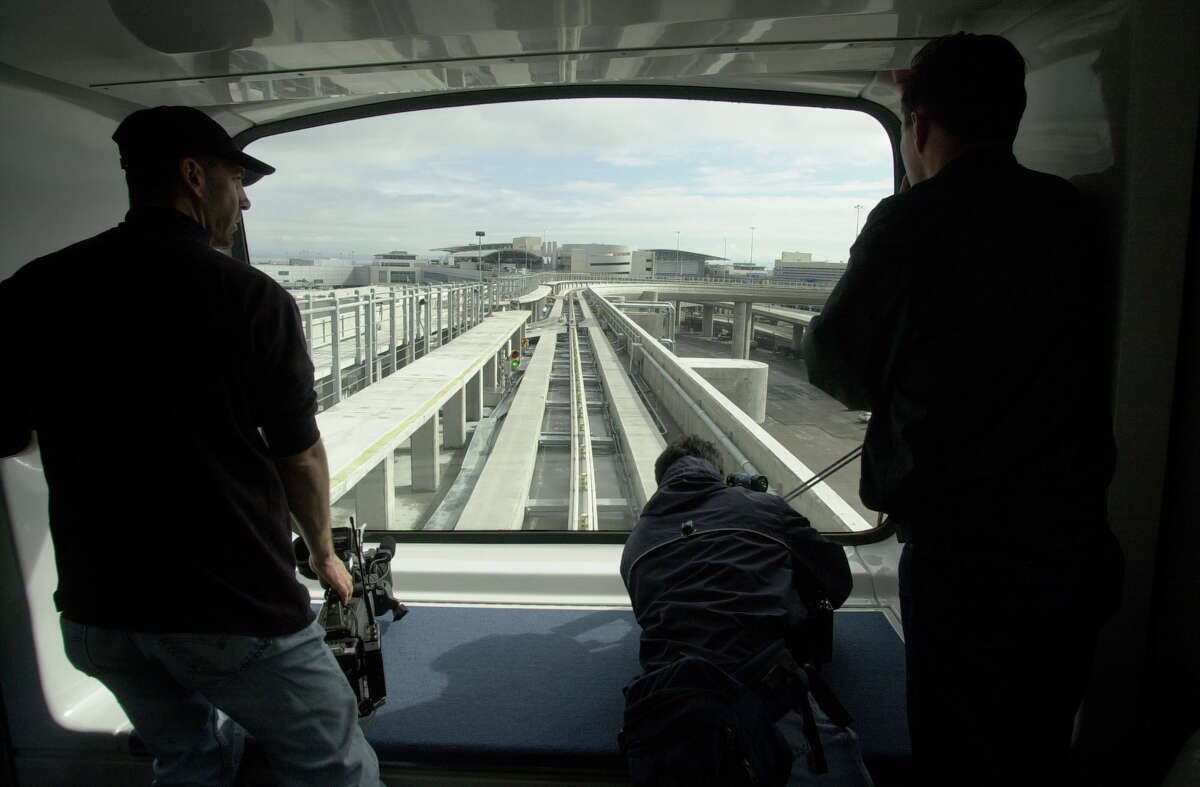
FILE: The Airtrain car rolls towards the international terminal at SFO in fall 2002.
Paul Chinn/San Francisco Chronicle via Getty Images
San Francisco International’s AirTrain people-mover this week reopened the station that serves Harvey Milk Terminal 1, a stop that had been closed for almost two years for a construction project. “Passengers will travel across a connector to arrive in the terminal on the mezzanine level and will then take an elevator or escalator down to the departures level for airline check-in and security checkpoint screening,” SFO said. “Passengers exiting Harvey Milk Terminal 1 will continue to be directed to the AirTrain station located in the International Terminal.”
Why did San Jose’s mayor and several city councilmembers show up at Mineta International Airport this week? Was it to announce a major expansion or a big infrastructure project? No, it was to mark the grand opening of a new restaurant: Jim Stump’s Taproom + Kitchen, serving up a “gastropub-style menu” in Terminal B near Gates 23 and 24. The airport hailed Jim Stump as “a premier South Bay chef” who, together with his wife Angelique Shepherd, operates restaurants in San Jose, Los Gatos, Willow Glen and Campbell.
In other airport news, Orlando International has cut the ribbon on a train station linked to its new Terminal C, which opened last fall. The station will be used by the Florida train operator Brightline, offering passenger service between Orlando and Miami beginning sometime this summer. In addition to nonstop trips between Orlando and Miami, which will take just under three hours, Brightline also plans to offer trains that make stops at West Palm Beach, Boca Raton, Fort Lauderdale and Aventura. One-way prices between Miami and Orlando start at $79 for restricted fares and $149 for premium tickets. Brightline plans 16 daily roundtrips between Central and South Florida with hourly departures in both directions.
